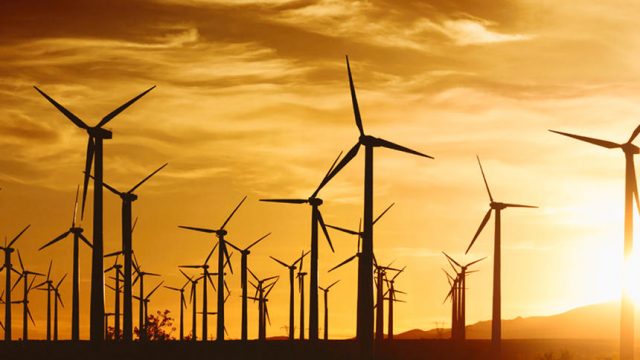Market-Distorting, Wind-Friendly Public Policy Needs to Go

The closing of the Stanton Station coal plant in central North Dakota has clearly struck a nerve in the state. This despite the fact that the plant was small, old, and not one that was providing base load power for the region.
It got the attention of our Public Service Commission, the folks in charge of regulating power utilities in our state. “As we bring in more wind and as companies continue to retire coal and potentially nuclear (power plants), the reliability of the power grid, I think, is threatened,” Commissioner Brian Kalk said at a recent meeting of the PSC to consider an application for yet another wind farm. These sentiments were echoed by the two other commissioners, Randy Christmann and Julie Fedorchak.
It also got the attention of Congressman Kevin Cramer. “This is just the first casualty here in North Dakota,” he told me of Stanton Station’s closing. “At the current rate of regulation and cost, I think you can expect this to continue to happen.”
Today Connie Krapp, a veteran of the energy industry in our state, submitted a guest post to SAB about wind power displacing coal power in our state.
I think Stanton Station is on people’s minds because it’s a very real, very palpable illustration of what could be coming for our state.
And it’s not just the economic hit we would take from all the jobs lost if we were to stop turning our state’s coal resources into electricity, which is a point I made in my Sunday newspaper column.
The public policy driving the rise of wind power in our state is also destabilizing our power grid:
Wind power is making our energy grid less reliable.
That’s not a political statement. It’s a factual statement. Thanks to policies ranging from heavy federal subsidies for wind power production to state mandates for renewable energy, we have seen a boom in wind power development.
“In the past decade, there have been more than 400 wind turbines placed on the western side of the state with an additional 550 proposed to be constructed by 2018,” Dickinson Press reporter Kalsey Stults reported last month.
But this may be both a blessing and a curse.
What most people miss when they think about power sources like wind, solar, coal, natural gas, and nuclear is that they’re not necessarily equivalent. They are not interchangeable cogs.
Wind power and solar power are intermittent sources of energy. Which is to say that they can only produce energy when the wind is blowing or the sun is shining, which are things we can’t control. Since, you know, we can’t control the weather. Thus we cannot rely on these sources of energy to provide us all the power we need whenever we want it. Because it might not be sunny enough, or windy enough, when demand for energy peaks.
[mks_pullquote align=”right” width=”300″ size=”24″ bg_color=”#ffffff” txt_color=”#000000″]Maybe one day we can figure out how to store energy on a massive scale to bridge the gaps in solar/wind output. But that day is not today.[/mks_pullquote]
So you need what’s called base load energy from sources like coal, natural gas, and nuclear. But coal and nuclear energy don’t play well on the same grid with intermittent energy sources. They cannot be easily ramped up and ramped down. It makes coal plants very inefficient to do that, and it’s downright dangerous for nuclear plants to ramp up and down.
Natural gas works great as a compliment to intermittent energy sources, as it can be easily “peaked”, and with natural gas prices at very low levels right now you’d think this would be the solution to the problem. Only the gas markets can be as volatile as the oil markets. In fact, a lot of the natural gas produced in our country is a by-product of oil development (that’s certainly the case here in North Dakota). The cost of natural gas energy could go up, something that is far less likely with coal or nuclear power where prices are more fixed.
So when the goalis to provide energy consumers with all the power they want, whenever they want it, at affordable prices there is a challenge in weaving power from these very different sources.
Yet that’s what public policy favoring wind and solar power – from massive federal subsidies to state-based mandates for renewable to a legal requirement that wind and solar be dispatched first to the power grid ahead of all other sources – has done.
As it stands today, most-favored power sources like solar and wind not only get to collect their government subsidies but also get to flood the power grid with their power (when they’re producing it) ahead of the energy from any other source. This often forces base load generators like coal and nuclear to sell their power at a loss, only hoping to recoup their money by selling energy wind the wind isn’t blowing and/or the sun isn’t shining.
This is a terrible situation for coal and nuclear power to be in.
This New York Times piece about the challenges ahead for nuclear power is worth a read. Many of those same challenges exist for coal-fired power too.
The frustrating part is that it’s public policy creating these challenges. Wind and solar exist because of production subsidies and government mandates, and not because they fit well in a reliable and cost-effective energy grid.
I don’t want to do anything to harm the wind or solar power industries. These are exciting technologies which, I’m sure, will serve us well in the future. Maybe one day we can figure out how to store energy on a massive scale to bridge the gaps in solar/wind output. But that day is not today.
Today wind and solar are being jammed down our throats by politics, and that’s not good for the reliability of our energy grid or our pocketbooks.




